
Art Wall Near Eichlers To Be Restored
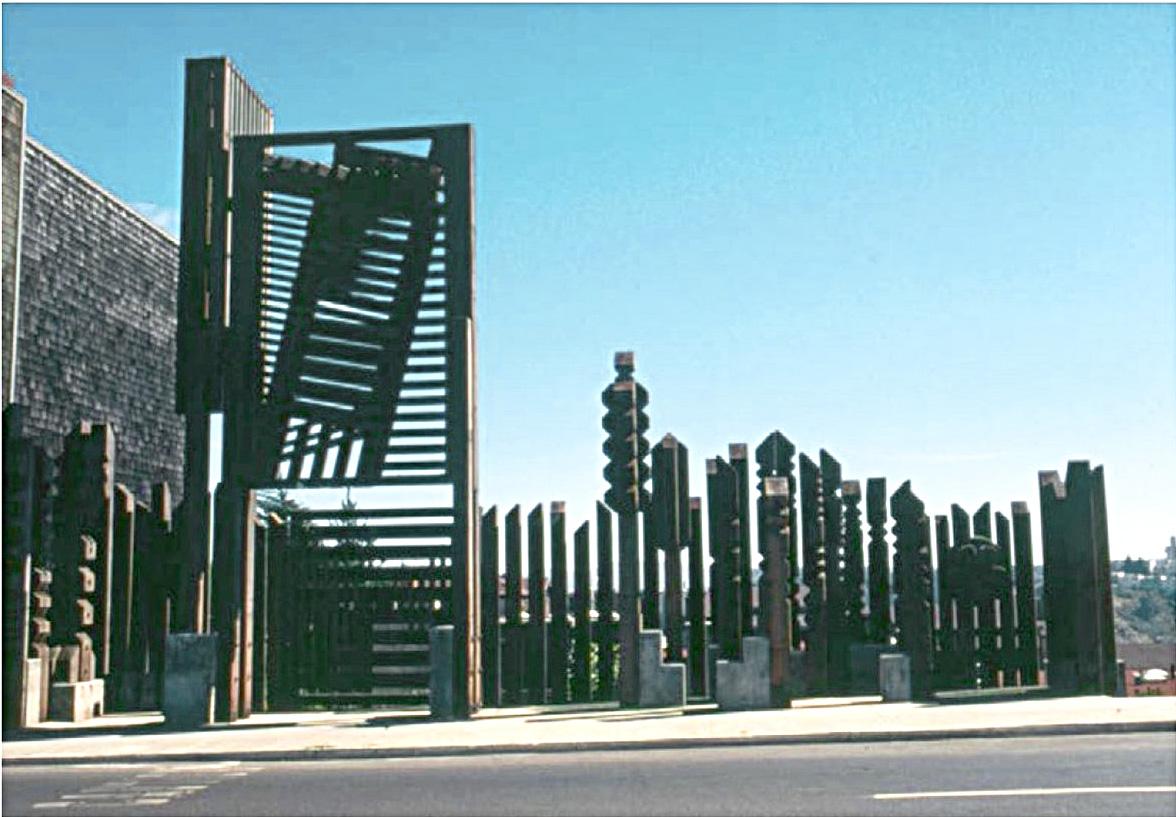 |
One of San Francisco’s quirkier public sculptures, built on land donated to the city by Joe Eichler, will see some spiffing up, thanks to a project that has just gotten the go-ahead.
The Diamond Heights Safety Wall was built in 1968 both to prevent cars from plowing into a modern neighborhood filled with Eichler and other architect-designed homes and to serve as a visual landmark for the neighborhood. It will be restored starting in April or May 2022, says Allison Cummings, senior registrar for the city’s civic art collection.
The Civic Arts department will restore the major portion of the redwood sculptural wall, which is roughly 50 feet wide and, in places, 32 feet high. The $65,000 for the restoration comes from the office of Supervisor Rafael Mandelman. Public Works will spend cash, too, to restore the concrete base.
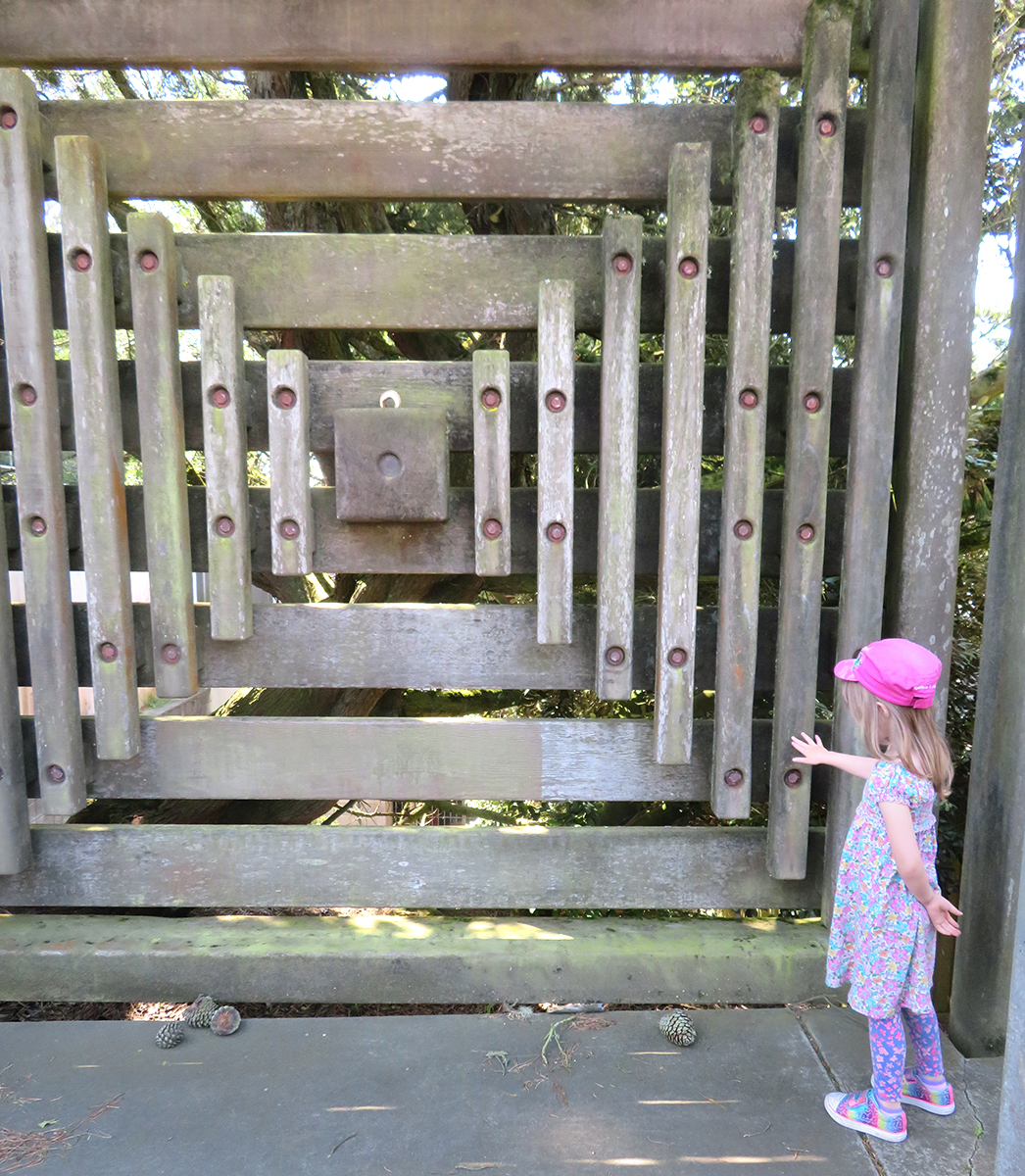 |
The wall lords over passersby at the intersection of Diamond Heights Boulevard and Clipper Street, just off busy Portola Drive. Planners, concerned that cars might fail to negotiate the turn, proposed a wall to catch errant cars before they slammed into homes. It is not clear if the wall ever actually caught a car.
“It is a crazy intersection, so it wouldn’t surprise me,” Cummings says.
While the wall is generally abstract and suggestive of mountains (like those of Diamond Heights itself), sculptor Stefan Alexander Novak (1918-2006) “included dragonfly and flower motifs – symbols of his wife and two daughters,” architectural historian Hannah Simonson wrote in a planning report.
She called the wall an “open, three-dimensional structure that creates a pedestrian experience ‘in the round.’”
“It was their advocacy for the piece that got the process going,” Cummings says of people in the neighborhood, which includes about 100 Eichler homeowners. “There was an effort to landmark the piece. The community really wanted it to stay and to be taken care of. This would not be happening if the community hadn’t spoken up.”
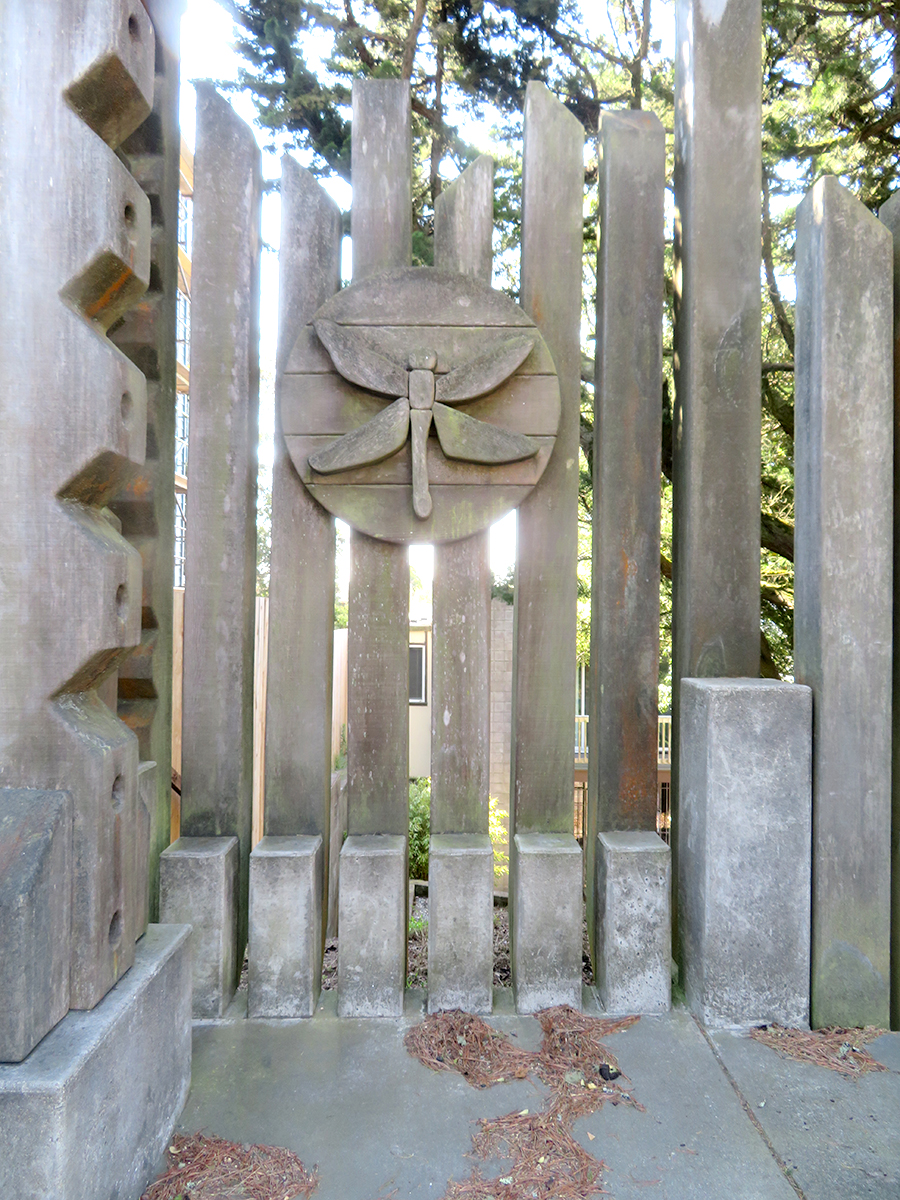 |
Bob Pullum, who moved into a mid-century modern home in the neighborhood in 1999, started the effort shortly after arriving, when “I saw that cool sculpture and saw that [tree] limbs were growing out of it.”
“I think it was forgotten. It was lost.” For years, though, nothing happened. Bob led the effort to landmark the sculpture, and still hopes to landmark it, perhaps in 2022.
About the restoration, he says, “I'm thrilled. I think it's the best outcome.”
“To be fair, the piece is actually in really good shape,” Cummings says. “It’s a testament to what redwood will do.”
In her 2017 report during the landmarking effort, Simonson laid out some potential maintenance and preservation issues:
“While the Safety Wall was intended to weather naturally, excessive biological growth may be detrimental to the structure’s condition.
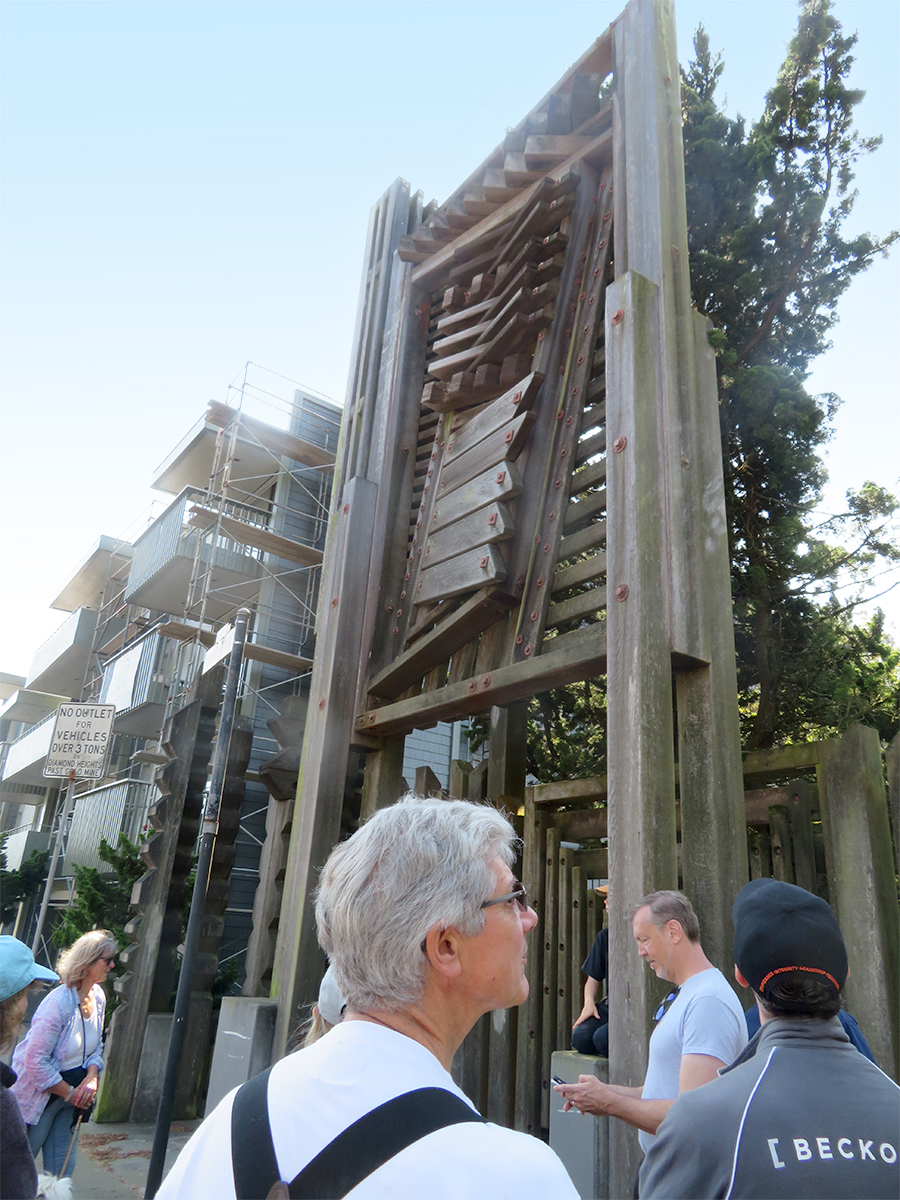 |
“Pruning and maintenance of nearby vegetation is also recommended to restore the intended effect of sun piercing the voids of the sculpture to highlight its geometry and to create dramatic shadows.”
In addition to restoration and landscaping, the project will add a plaque acknowledging the work of Novak, who originally won the commission through a competition. An architect as well as an artist, Novak exhibited widely, did other public sculpture, and as a professor at UC Berkeley, taught Mark Di Suvero.
Diamond Heights was a mountainous wildland when it became a redevelopment project in the 1960s. Redevelopment turned it into something else entirely. “Diamond Heights is one of the largest, most cohesive Modernist residential neighborhoods in San Francisco,” Simonson writes.
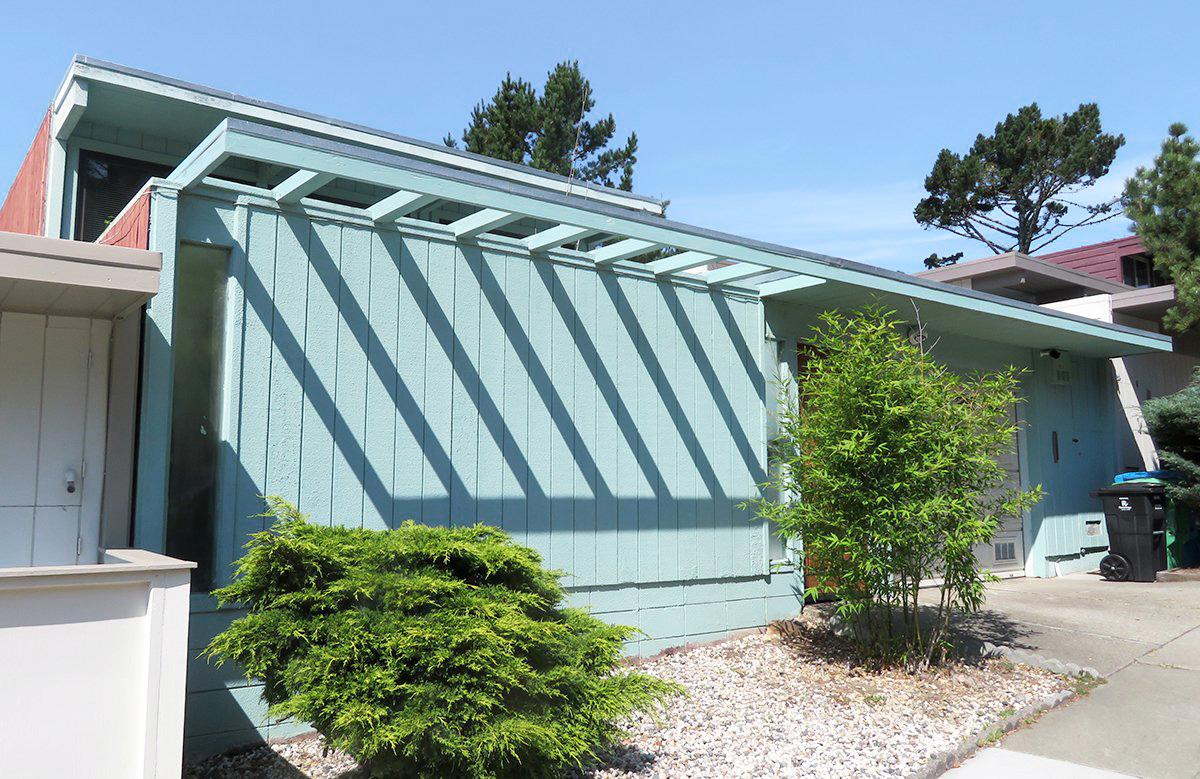 |
The safety wall was designed to symbolize the new, modern neighborhood that rose on the windswept hills from 1961 to 1978.
“Not just an installed piece of sculpture, the Diamond Heights Safety Wall is a site-specific work that uniquely addresses a life-safety concern, serves as a visual landmark for the community, and embodies a Bay Area regional Modernist aesthetic associated with the postwar era and the Diamond Heights Redevelopment Project specifically,” Simonson writes.
Joe Eichler got involved with the wall in 1963, when the city’s redevelopment chief suggested a “decorative sculptured wall at the entrance to Diamond Heights,” according to Simonson’s report. Joe dedicated a sliver of his land for that purpose.
Now that the safety wall is being repaired, Bob Pullum thinks it should also be celebrated, both through landmarking and through lighting. “I think it would be wonderful if it were lit up at night,” he says.
- ‹ previous
- 45 of 677
- next ›



